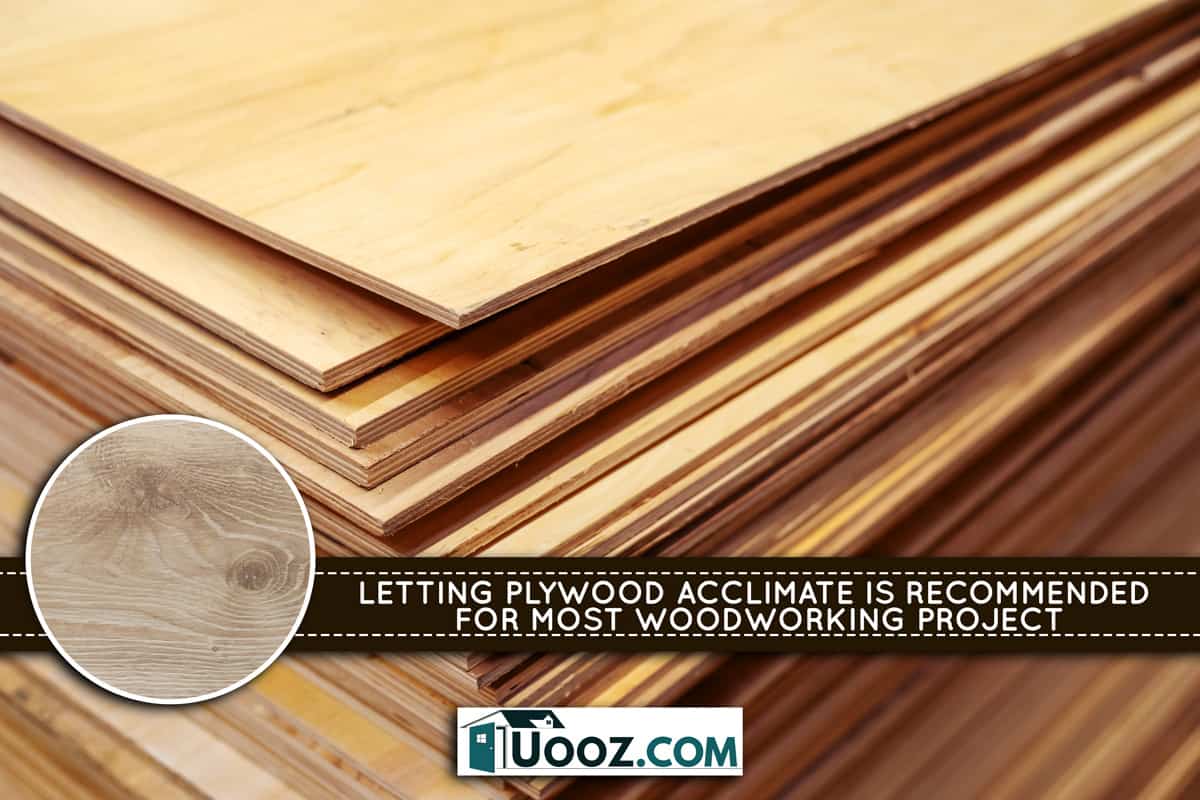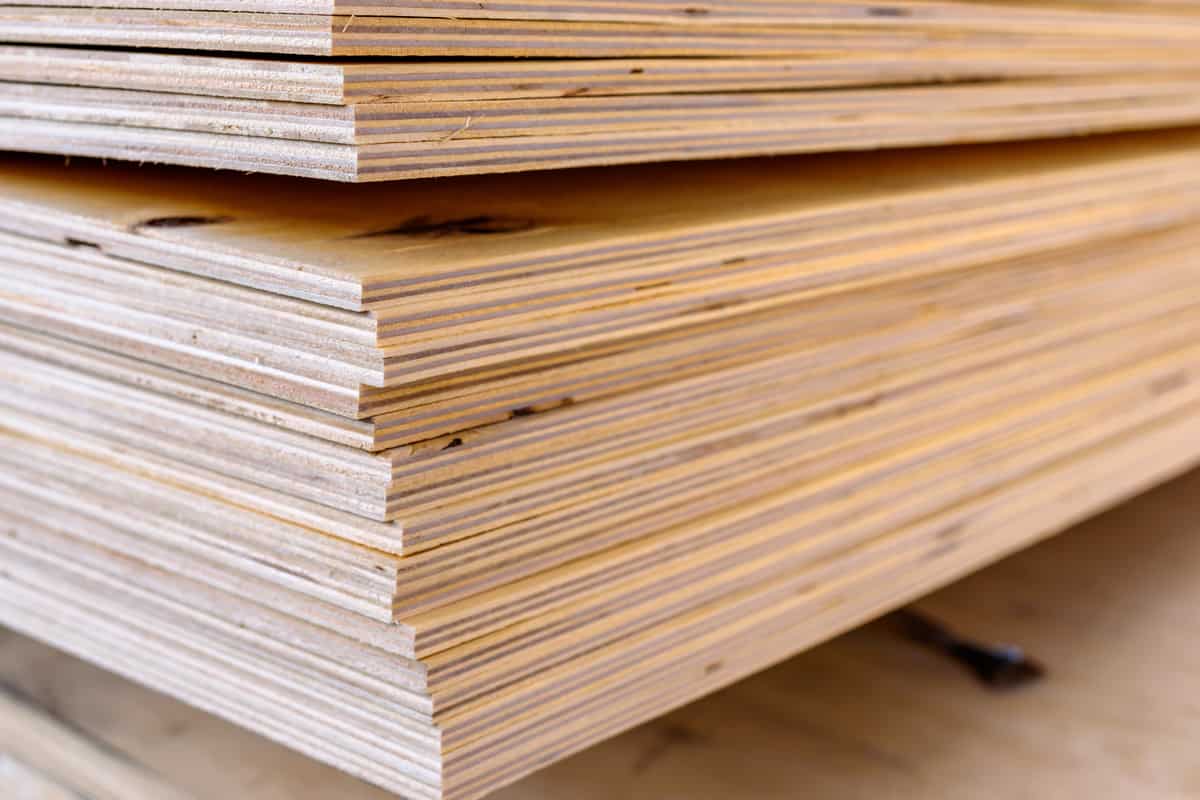Are you wondering how long plywood needs to acclimate before using it for your projects? Well, you’re in the right place! Understanding the acclimation process is crucial for ensuring the success of your woodworking endeavors. So, let’s dive in and learn all about it!
Picture this: you’ve got a brand-new sheet of plywood that you’re itching to use. But hold your horses! Plywood, being a natural material, needs time to adjust to its surroundings. Just like you need a moment to adapt to a new environment, plywood needs to acclimate before it can be put to work.
Now, you might be wondering, “But how long does plywood need to acclimate?” It’s a great question! The duration depends on a few factors, including the moisture content of the plywood and the conditions of your working environment. Let’s explore this topic further and unravel the mysteries of plywood acclimation!
So, whether you’re a woodworking enthusiast or a curious learner, join us as we uncover the ins and outs of plywood acclimation and discover the ideal waiting time for this versatile material. Get ready to become a pro at acclimating plywood like a boss! Let’s get started!

How Long Does Plywood Need to Acclimate?
Understanding Plywood Acclimation
When it comes to working with plywood, one crucial step that often gets overlooked is the process of acclimation. Plywood is a versatile material used in various construction and woodworking projects, but if it is not properly acclimated, it can lead to problems such as warping, swelling, and shrinking. Acclimating plywood involves allowing it to adjust to the moisture content and temperature of its intended environment before installation or further processing. This article will delve into the details of plywood acclimation, the reasons why it is important, and the recommended duration for acclimating plywood.
Plywood is made up of thin layers of wood veneer bonded together, and each layer has a grain pattern that can expand or contract with changes in humidity. When plywood is exposed to a new environment with different moisture levels, it needs time to adjust and reach an equilibrium moisture content (EMC) that matches its surroundings. This is why acclimation is necessary. By allowing the plywood to adjust before installation, it reduces the chances of it experiencing dimensional changes later on, ensuring stability and longevity in your project.
The duration of plywood acclimation can vary depending on several factors, including the type of plywood, the current moisture content, and the desired EMC of the environment. In general, it is recommended to acclimate plywood for at least 48 hours, but certain plywood types may require longer acclimation periods. Factors such as high humidity or extreme temperature variations may also affect the acclimation process. It is important to consult the manufacturer’s recommendations or seek professional advice for specific plywood products.
Factors Affecting Plywood Acclimation Time
While a general guideline of 48 hours for plywood acclimation is commonly followed, several factors can influence the actual duration required. Understanding these factors will help ensure that you allow sufficient time for your plywood to acclimate.
1. Plywood Thickness
The thickness of plywood plays a role in determining its acclimation time. Thicker plywood takes longer to acclimate as the moisture content needs to penetrate through the layers. Thicker plywood may require several days or even a week for proper acclimation.
2. Humidity Levels
High humidity levels can prolong the acclimation process as plywood tends to absorb moisture from the surrounding air. If you are working in a particularly humid environment, be sure to give the plywood ample time to adjust to the moisture levels to prevent future issues.
3. Climate and Temperature
Extreme temperature variations can affect the acclimation process. Brought into a cold environment, plywood may shrink, while exposure to excessive heat may cause it to expand. It is important to consider the climate and temperature conditions in which the plywood will be used and adjust the acclimation time accordingly.
4. Type of Plywood
Various types of plywood have different compositions and properties, which can impact the acclimation time. Specialty plywood, such as marine-grade plywood or exterior plywood, may require longer acclimation periods due to their specific construction and intended usage.
5. Desired EMC
The desired equilibrium moisture content (EMC) of the environment in which the plywood will be installed also affects the acclimation time. Different applications have different EMC requirements, such as dry environments or rooms with specific humidity levels. Plywood should be acclimated to match the EMC of its intended environment for optimal performance.
Tips for Proper Plywood Acclimation
To ensure the best results and minimize the risk of issues caused by inadequate acclimation, consider the following tips:
1. Store Plywood Flat
Store your plywood in a flat, dry area that closely resembles the environment it will be installed in. Avoid storing plywood vertically, as this can lead to warping.
2. Allow Sufficient Time
Though 48 hours is a general guideline for acclimation, it is important to give your plywood extra time when dealing with thicker or specialty plywood. Consult manufacturer recommendations or seek professional advice for specific plywood products and environmental conditions.
3. Avoid Extreme Conditions
Do not expose plywood to extreme temperature or humidity conditions during acclimation, as this can affect the quality and stability of the wood. Maintain a stable environment to ensure optimal acclimation.
4. Use Proper Sealing Techniques
If you are using plywood for exterior or marine applications, ensure that you use proper sealing techniques to protect it from moisture. This can help maintain the desired moisture content and prevent issues such as rotting or delamination.
5. Seek Professional Advice
If you are unsure about the acclimation requirements for a specific project or plywood type, it is always best to seek professional advice. They can provide guidance based on their expertise and experience, ensuring the best outcome for your project.
Additional Information on Plywood Acclimation
Common Misconceptions About Plywood Acclimation
Despite the importance of plywood acclimation, there are several common misconceptions that circulate within the woodworking and construction communities. Let’s debunk some of these misconceptions:
1. Skipping Acclimation Saves Time
While it may seem like skipping the acclimation process saves time, it can actually lead to more time-consuming and costly issues in the long run. Inadequately acclimated plywood can experience warping, swelling, or shrinking, which will require corrective measures or even complete project overhauls.
2. Acclimation Only Matters for Solid Wood
Some people believe that acclimation only applies to solid wood and not plywood. This is untrue. Plywood is still made up of wood layers and can be affected by moisture changes. Proper acclimation is necessary to ensure stability and prevent dimensional changes.
3. Acclimation Is a One-Time Process
Acclimation is not a one-time process that only needs to be done at the beginning of a project. Plywood can still be affected by environmental changes even after acclimation. It is important to monitor and maintain appropriate moisture levels throughout the project’s lifespan.
Conclusion
Proper acclimation is a crucial step in working with plywood to ensure stability and minimize the risk of issues such as warping or shrinking. The duration of plywood acclimation depends on factors such as thickness, humidity levels, climate, type of plywood, and desired EMC. Never underestimate the importance of acclimation and always follow manufacturer recommendations or seek professional advice when in doubt. By giving your plywood the time it needs to adjust to its environment, you can achieve successful and long-lasting results in your woodworking or construction projects.
Key Takeaways: How Long Does Plywood Need to Acclimate?
- Plywood needs to acclimate for at least 72 hours before installation.
- Acclimation allows the plywood to adjust to the temperature and moisture levels of its environment.
- During acclimation, plywood should be stored in the same environment as its installation location.
- Humidity and temperature affect the acclimation time, so it’s important to check manufacturer guidelines.
- Proper acclimation reduces the risk of warping, shrinking, or expanding after installation.
Frequently Asked Questions
Welcome to our frequently asked questions section on plywood acclimation. If you’re wondering how long plywood needs to acclimate before use, you’ve come to the right place. Below are some common questions and their answers to help you better understand this important process.
How can I determine if my plywood needs to acclimate?
The acclimation process is crucial for plywood, especially if it has been stored in different conditions. To determine if your plywood needs to acclimate, check the moisture content. Use a moisture meter to measure the plywood’s moisture content in different areas.
If there is a significant moisture difference between the plywood and its surroundings, acclimation is necessary. Additionally, check the manufacturer’s guidelines, as they may provide specific instructions on acclimation times.
How long should I let plywood acclimate before using it?
The duration of plywood acclimation depends on several factors, such as the plywood’s thickness, the humidity and temperature of the environment, and the local climate conditions. As a general guideline, plywood usually needs to acclimate for at least 48 to 72 hours.
However, it’s essential to note that this is just a general recommendation. Thicker plywood or plywood stored in extremely humid or dry environments may require a longer acclimation period. It’s always best to refer to the manufacturer’s guidelines for specific acclimation durations.
What should I do during the acclimation process?
During the acclimation process, it’s important to create the ideal environment for the plywood to adjust to its surroundings. Ensure that the area where the plywood will be used has proper temperature and humidity levels. Keep the plywood stacked flat with adequate ventilation to allow for equal air circulation around each sheet.
It’s also crucial to protect the plywood from exposure to direct sunlight, moisture, and extreme temperature fluctuations. By following these steps, you can ensure that the acclimation process is successful and the plywood is ready for use.
What are the consequences of using plywood without acclimating it?
Using plywood without allowing it to acclimate can lead to several issues. One common problem is warping. If the plywood is exposed to different moisture levels, it may expand or contract unevenly, resulting in warping or bowing.
This can affect the structural integrity of your project and may cause problems during installation. Additionally, the plywood may suffer from cracking or splitting. By acclimating the plywood, you reduce the risk of these issues and ensure a more stable and reliable end result.
Can I speed up the plywood acclimation process?
While it’s important not to rush the plywood acclimation process, there are certain steps you can take to help speed it up. One effective method is to use fans or dehumidifiers to regulate the temperature and humidity levels in the area where the plywood is being acclimated.
Another option is to increase air circulation around the plywood by leaving small gaps between the sheets. However, it’s crucial to exercise caution and avoid extreme temperature or humidity changes, as this can negatively impact the plywood. It’s always best to follow the manufacturer’s guidelines and allow sufficient time for proper acclimation.

Wood Floor Acclimation – How Long Does It Take?
Summary
So, how long does plywood need to acclimate? It depends on the environment and thickness – generally, 2-3 days is enough for smaller projects, while larger ones may require up to a week. Remember to stack the plywood properly and check moisture levels to avoid issues like warping or shrinking. Giving it enough time to adjust will ensure better results in your woodworking projects.
